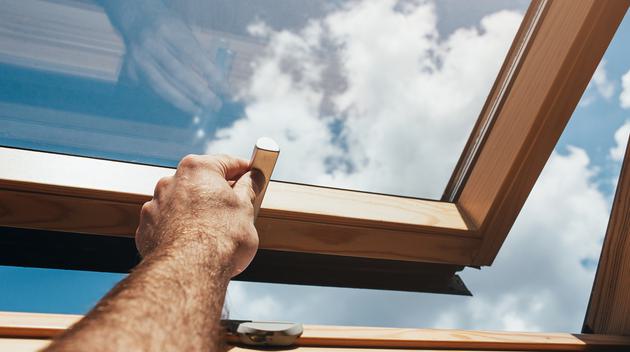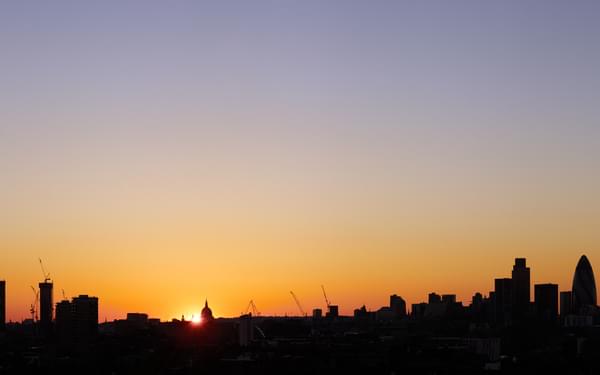Back to Articles
Burning injustice: How wood smoke fuels air quality inequality
Lauren Massingham \ 24th Jan 2024
Beyond the cozy glow and crackling flames, woodburning hides a dark secret: it's fuelling inequality in our air quality.
As the first Clean Air Night, Wednesday 24 January shines a light on this hidden injustice. It's a reminder that clean air isn't a privilege, it's a right, enshrined in the Clean Air Bill ("Ella's Law") which is hopefully set to become new legislation.
Led by Global Action Plan, the sister campaign to Clean Air Day, is focussing on woodburning and how it can harm your wallet, your health and the planet.
Vulnerability and connection
Woodburning spews harmful particles and, as research has revealed, isn't an equal-opportunity offender. It can be more prevalent in deprived areas, where residents often already breathe the brunt of traffic fumes, further jeopardising their health.
And it's not just about class. Women, children, and ethnic minorities are disproportionately impacted by air pollution.
In light of the campaign, woodburning has shown up in a lot in articles I have read recently and been a topic of conversation at conferences and events. We all know that clean air is vital for our health and wellbeing, but we also know that it isn't easy to just clean up the air we breathe.
I admit that I'm a white, working mum, living in middle-class suburbia. Our family car is parked in a driveway, my kids (mostly) sleep in a quiet, warm room, and I'm up-to-date with information that makes it easier for our family to reduce the amount of pollution we contribute.
But this privilege comes with a responsibility, to be aware of the inequity etched into the very air we breathe. I can't ignore lives blighted by a pollution they didn't choose.
Bradford's air quality monitoring reveals a stark truth
In December last year, I went to the annual Cambridge Environmental Research Consultants (CERC) user group conference. Amidst talks on climate solutions, one presentation by the Environmental Health Officer for City of Bradford Metropolitan Borough Council really hit home: Bradford's innovative air quality monitoring scheme, known as the Bradford Particle Reduction Strategy.
Bradford's strategy targeted a better understanding of household burning habits.
They specifically targeted solid fuel particulate emissions, from wood and coal which are known culprits of air pollution, by strategically deploying a network of automatic monitors. These sentinels tracked particle concentrations inside and outside homes, painting a granular picture of how burning habits affected air quality.
A fascinating pattern emerged: Bradford Environmental Health discovered Sunday afternoons saw a dramatic spike in particulate concentrations.
But there was also another correlation found within the data that holds immense significance. These spikes were found in two areas of polarising contexts:
- In the countryside in affluent homes with woodburning stoves
- Deprived areas where households are currently burning waste wood because, during the cost-of-living-crisis, it's considered cheaper than turning the heating on
What does this mean for Bradford and beyond? More in depth analysis is planned but, as an air quality consultant, I believe this initial finding is important when it comes to determining how to improve public access to air quality information and who that information needs to reach and why.
Armed with this newfound insight, local authorities can tailor interventions – targeted public awareness campaigns, strategic enforcement, or even incentives for cleaner-burning alternatives. This data-driven approach holds promise for tackling pollution at its source, improving the health of Bradford's residents.
This isn't just an isolated case. Across the UK, lighting fires in our homes (domestic burning) makes a large contribution to the harmful small particle air pollution.
Burning wood accounts for 75% of these emissions[1] and may also contain other contaminants hazardous to human health, particularly if it's waste wood that's being burnt.
Over the past decade, the amount of harmful small particle air pollution caused by domestic burning has more than doubled, while the pollution caused by industry and cars, vans and lorries is decreasing[2].
Burn better, breathe better
But the story doesn't end there. Social status, like an invisible chimney, funnels pollution towards the most vulnerable. Those living in more deprived areas are also often closer to main roads, queuing traffic and subsequently Air Quality Management Areas. Areas with higher ambient pollutant concentrations and where air quality is more likely to negatively impact your health and wellbeing.
While woodburning stoves can worsen indoor air quality, ventilation is often seen as the best solution. However, opening windows to bring in fresh air can introduce even more pollutants if the outdoor air quality is poor, which is often the case during winter due to limited pollution dispersion.
Only 8% of those burning indoors have no alternative source of heating — and most of these people live in rural areas and are on lower incomes[3].
In these cases, to minimise the emissions released, people need to be made aware of Defra’s Burn Better guidelines so that they can mitigate the negative impacts. While these guidelines won’t remove the pollution from woodburning, they're a step in the right direction.
Owning your privilege and using it for good
Gender, ethnicity, even income, all play a role in the air we breathe. This silent inequality can have devastating consequences, from respiratory issues to heart disease, even cancer.
Campaigns such as Clean Air Night help highlight why improving air quality is vital and ways in which we can each make a difference.
Remember, the air we breathe is a shared resource, not a privilege. We can switch to cleaner heating sources, support legislation for cleaner fuels, and advocate for green spaces in polluted areas.
Education is key. It's about using our voices, our resources, our very privilege so we're contributing to positive change.
We're able to support any local authorities with strategies like the one Bradford has implemented by obtaining the vital data you need to inform the right mitigation approach.
Find out more about our air quality team or get in touch with Lauren for any advice.











